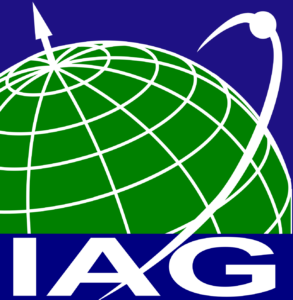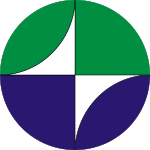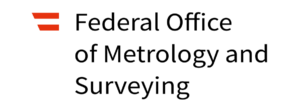Working Groups 1.3
Structure, Working Groups
Sub-commission 1.3a is composed of representatives from European IAG member countries. The Governing Board is composed of members elected by the EUREF plenary, members in charge of special tasks and ex-officio members. The following Working Groups have been set up:
SC1.3a-WG1: European Unified Height Reference
Chair: Joachim Schwabe (Germany)
This WG has the following goals:
- Complement EVRS with an official height reference surface (hybrid quasigeoid model).
- Improve information about national height coordinate frames and their transformations to the EVRS.
- Enhance the usability of the unified European height reference.
SC1.3a-WG2: EPN Densification (EPN-D)
Chair: Ambrus Kenyeres (Hungary)
The primary goal of this WG is to realize a continental-scale, homogeneous, high-quality position and velocity product in a well-defined reference frame, with comparable quality from Greenland to Crete, from Svalbard to Gran Canary. To achieve this goal, processing results (daily or weekly SINEX files) of national or regional GNSS networks are merged using the EPN as backbone in multi-year position and velocity solutions.
SC1.3a-WG3: Deformation models
Chair: Martin Lidberg (Sweden)
The goal of the WG is to develop models of crustal velocities withing EUREF area of interest, based on observed velocities at Continuously Operating GNSS stationsin the EPN and EPN-D.
SC1.3a-WG4: EPN Reprocessing
Chair: Christof Völksen (Germany)
The purpose of this WG is the coordination of re-processing of GNSS- observationsfrom the EPN when major updates are implemented in scientific GNSS analysis. This typically occurs after major re-analysis by the IGS and release of new ITRFs. Current activity is the third reprocessing of the EPN, aiming for homogeneous time series and reliable velocity estimates following igs2020-standards and compatible with the ITRF2020.
Program of Activities
- Continue to develop the EPN in close cooperation with IGS (International GNSS Service), for the maintenance of the European Terrestrial Reference Frame (ETRF), as a contribution to the ITRF and as an infrastructure to support practical applications for precise positioning and referencing geoinformation;
- Extend the United European Levelling Network (UELN) in order to include as many countries as possible in the current realization of the European Vertical Reference System (EVRS), and further continue the long term maintenance of the European Vertical Reference Frame (EVRF) applying a kinematic approach, in order to take vertical crustal deformations into account;
- Closely follow and contribute to the developments regarding the International Height Reference System (IHRS) and its realizations in International Height Reference Frames (IHRF), and when appropriate establish the precise relation between IHRF and EVRF;
- Promote efforts on regional geoid models in Europe as the link between the ETRF and the EVRF;
- Support new developments in reference frame realization and applications by introducing new technologies like real-time GNSS data transfer and products, as well as Galileo for precise positioning;
- Realize a dense and homogeneous position and velocity product for Europe;
- Establish a dense velocity field model in Europe for the long-term maintenance of the European reference frame;
- Provide GNSS tropospheric estimates at the EPN stations in support of climate research;
- Contribute to the GGOS using the installed infrastructures managed by the EUREF members;
- Promote the adoption of the reference systems defined by EUREF (ETRS89 – European Terrestrial Reference System 1989 and EVRS – European Vertical Reference System) in the European countries and European-wide initiatives related to geo-referencing activities like INSPIRE;
- Cooperate with European political and scientific organizations and projects, e.g. EuroGeographics, EUMETNET, CEGRN (Central European GPS Geodynamic Reference Network), EPOS (European Plate Observing System), UN-GGIM: Europe, etc.;
- Organize annual symposia addressing activities carried out at national and Europewide levels related to the global work and objectives of EUREF.
Members
The members of the Governing Board at the beginning of 2024 are as follows. New members can be elected. An up-to-date list is available at www.euref.eu.
- Carine Bruyninx (Belgium)
- Rolf Dach (Switzerland)
- Ambrus Kenyeres (Hungary)
- Karin Kollo (Estonia)
- Juliette Legrand (Belgium)
- Martin Lidberg (Sweden)
- Tomasz Liwosz (Poland)
- Benjamin Männel (Germany)
- Rosa Pacione (Italy)
- Martina Sacher (Germany)
- Wolfgang Söhne (Germany)
- Christof Völksen (Germany)
- Joaquin Zurutuza (Spain)
Active honorary members
- Zuheir Altamimi (France)https://sirgas.ipgh.org
- Alessandro Caporali (Italy)
- Markku Poutanen (Finland)
- João Agria Torres (Portugal)
Structure, Working Groups
The structure of the Sub-commission 1.3b is based on the functioning SIRGAS Working Groups. They are responsible for implementing the scientific activities and practices approved by the Directing Council. There are currently three WGs:
SC1.3b-WG1: Establishment and maintenance of the Geocentric Reference Frame for the Americas and the Caribbean
Chair: José Antonio Tarrío (Chile)
This WG is responsible for:
- Coordinating the implementation and maintenance of the geocentric reference frame.
- Coordinating its activities at the data centers and its analyses.
- Developing the tools, applications, technical guides and training related to its own activities.
SC1.3b-WG2: National Integration to the SIRGAS Reference Frame
Chair: Demián Gómez (USA)
This WG is responsible for:
- Encouraging the integration of the pre-existing geodetic networks of the Member States to SIRGAS.Developing the tools, applications, technical guides and training for implementing the SIRGAS reference frames.
SC1.3b-WG3: Definition, establishment and maintenance of the Vertical Datum for the Americas and the Caribbean
Chair: Gabriel do Nascimento Guimarães (Brazil)
This WG is responsible for:
- Defining, maintaining and updating a unified system of physical heights.
- Coordinating the implementation of a network of stations linked to the international system for heights.
- Developing and updating a model of a gravimetric, high-resolution geoid.
- Establishing and maintaining an absolute gravity network.
- Developing the tools, applications, technical guides and training related to its own activities.
SC1.3b-WG3 is strongly linked with IAG Sub-commission 2.4b (Gravity and Geoid in South America).
Program of Activities
Since the SIRGAS countries are improving their national reference frames by installing an increasing number of continuously operating GNSS stations, it is necessary to outline the best strategy for the combination of those frames to the continental frame.
This includes:
- Promotion of the IGS and IERS standards within the SIRGAS countries to ensure the adequate installation, maintenance, and analysis of continuously operating GNSS stations;
- Establishment of a SIRGAS National Processing Centre in all the member countries;
- Refinement of the SIRGAS station hierarchy. At present, two classes are considered: core and densification stations (the establishment of other categories is under consideration);
- Promotion of the adequate usage of SIRGAS as a reference frame using capacity building activities. This comprises SIRGAS schools on reference frames, scientific processing of GNSS data, atmospheric analysis based on the SIRGAS infrastructure, etc.;
- Promotion and implementation of real-time services based on the SIRGAS infrastructure to make available the reference frame to more users;
- The kinematics of the SIRGAS frame, up to now, have been represented by linear station movements (i.e. constant velocities). This representation is not sufficiently precise due to existing seasonal variations in the station position time series and discontinuities caused by the frequent occurrence of seismic events in the SIRGAS region.
According to this it is necessary
- To model non-linear station movements within the reference frame computation;
- To implement a methodology aiming at a precise transformation between different epochs and, in general, between pre-seismic and post-seismic reference frame realizations in particular;
- To evaluate the feasibility of computing and using near-real-time reference frames instead of those based on epoch station positions and constant velocities.
Members
SIRGAS Executive Committee
- Gustavo Caubarrère (Uruguay); Chair
- Salomão Soares (Brazil); Vice-Chair
- José Antonio Tarrío (Chile); Chair SC1.3b-WG1
- Demián Gómez (USA); Chair SC1.3b-WG2
- Gabriel do Nascimento Guimarães (Brazil); Chair SC1.3b-WG3
SIRGAS Directing Council
for an up-to-date list, see https://sirgas.ipgh.org.
SIRGAS Scientific Council
- Denitzar Blitzkow (Brazil)
- Laura Sánchez (Germany)
- Hermann Drewes (Germany)
- Claudio Brunini (Argentina)
- María Virginia Mackern (Argentina)
- Luiz Paulo Souto Fortes (Brazil)
- Sílvio Rogerio Correia de Freitas (Brazil)
- Melvin Jesús Hoyer Romero (Venezuela)
Working Groups, Program of Activities
There are currently the following Working Groups:
SC1.3c-WG1: North American Reference Frame Densification (NAREF)
Chair: Jason Bond (Canada)
This WG is responsible to densify the ITRF in the North American region by organizing the computation of weekly coordinate solutions and associated accuracy information for continuously operating GNSS stations that are not part of the current IGS global network. A cumulative solution of coordinate and velocities will also be determined on a weekly basis. The WG will organize, collect, analyze and combine solutions from individual agencies, and archive and disseminate the weekly and cumulative solutions.
SC1.3c-WG2: North American Terrestrial Reference Frame of 2022 (NATRF2022)
Chair: Rick Bennett (USA)
This WG is responsible to establish a high-accuracy, geocentric reference frame, including velocity models, procedures and transformations, tied to the stable part of the North American tectonic plate which would replace NAD83 and serve the broad scientific and geomatics communities by providing a consistent, mm-accuracy, stable reference with which scientific and geomatics results (e.g., positioning in tectonically active areas) can be produced and compared.
SC1.3c-WG3: Reference Frame Transformations in North America
Chair: Michael Dennis (USA)
This WG is responsible to determine consistent relationships between international, regional and national reference frames in North America, to maintain (update) these relationships as needed and to provide tools for implementing these relationships.
Members
- Phillip McFarland (USA); Co-Chair
- Jason Bond (Canada); Chair SC1.3c-WG1; Co-Chair
- Rick Bennett (USA); Chair SC1.3c-WG2
- Michael Dennis (USA); Chair SC1.3c-WG3
- Mike Bremner (Canada)
- Mohammad Ali Goudarzi (Canada)
- Mike Piraszewski (Canada)
- Finn Bo Madsen (Denmark)
- Dan Gillins (USA)
- Dan Roman (USA)
- Jarir Saleh (USA)
- Dru Smith (USA)
- Michael Craymer (Canada)
- Mike Bevis (USA)
- Geoff Blewitt (USA)
- Jeff Freymueller (USA)
- Tom Herring (USA)
- Corné Kreemer (USA)
- Richard Snay (USA)



